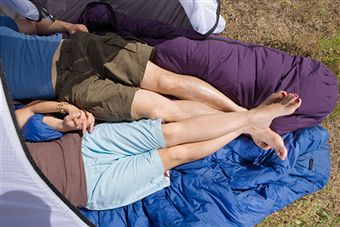Hiking and camping are adventurous outings which require fundamental equipment i.e. food, fuel, clothing and shelter. Deciding on the correct and foolproof camping gear will make the trip fun-filled, happy and memorable. After all, who wants to spend terrible nights shivering in the cold and getting wet in the rain? Always look in for camping gear that suits all your requirements, comfort and personal taste.
Prevention is better than cure; it is always better to be well-prepared for the whole camping adventure. Any misses may cause severe impact on your journey. Follow some easy, not to be forgotten steps to make your camping experience more delightful.
Step 1: Make proper estimation of shelter sharing

An ideal tent works well for every member of the family with more space. Car campers should keep in mind that the tent should be big enough to make easy movements and makes provision of a privacy cover in case there are more than 2 people sleeping inside. Backpackers may opt for light weighted shelters which are basic and may be easy to carry on their backs. Consider buying a 4-season shelter for the casual, frequent trips. Light weight shelters are apt for warm conditions and are in your budget, but they will not protect from harsh weather. Frequent hikers use high quality tents so as to get more protection from the weather.
Step 2: Clinch on the season when you will camp and ascertain the suitable sleeping bags
Verify the sleeping bag specifications to find out the temperature rating. Light-weight, down-filled are some features that a bag can have but these bags won’t work well in the winter. Take a demo of your bag, get in, make movements and make sure of the ideal space that you have wanted for. Moving in and out frequently will give you a quick idea on the construction quality of the sleeping bag. An ideal bag ought to have a firm zipper, close threads and tight stitched steams and heavy drawstrings that give the bag strength.
Step 3: Choose the clothing accessories parallel to the hiking needs

Campers need to choose high quality socks to prevent them against blisters. Pants, shirts and undergarments must be made of quick drying material to avid the chances of hiker experiencing hypothermia. Less frequent or casual campers will have to consider carrying clothes that are less heavy and can be carried without any strains.
Step 4: Identify your cooking skills while opting for cooking equipment
Stoves and cookware’s are customized and designed as per its usability. Lightweight stoves, comprising of single burner and offering muticooking features like baking steaming cooking in one pot is preferably good. Car campers may go for 2/3 burner stoves that can work well with the day to day kitchen pots. Keeping an all purpose fuel handy will be an added advantage.
Step 5: Let go of unwanted tools and equipment
Assemble all your equipment and distinguish what items you want to carry and what items you can eliminate. It is advisable renting equipment rather than making purchases if you are not too frequent with camping. This may give you a clear idea about the equipment without burning your pocket. Purchase 2 sleeping bags that will serve you different weather conditions. Plus carry bug repellents, mosquito repellents, sunscreens etc to prevent yourself from unwanted elements and creatures.

I hate ALL KOAs.Too noisy and disorganized. Dogs evryewhere, barking all night, kids running and roasting marshmellows after midnight, and if you are resting to hike the next day, you just cant because they don’t let you sleep.